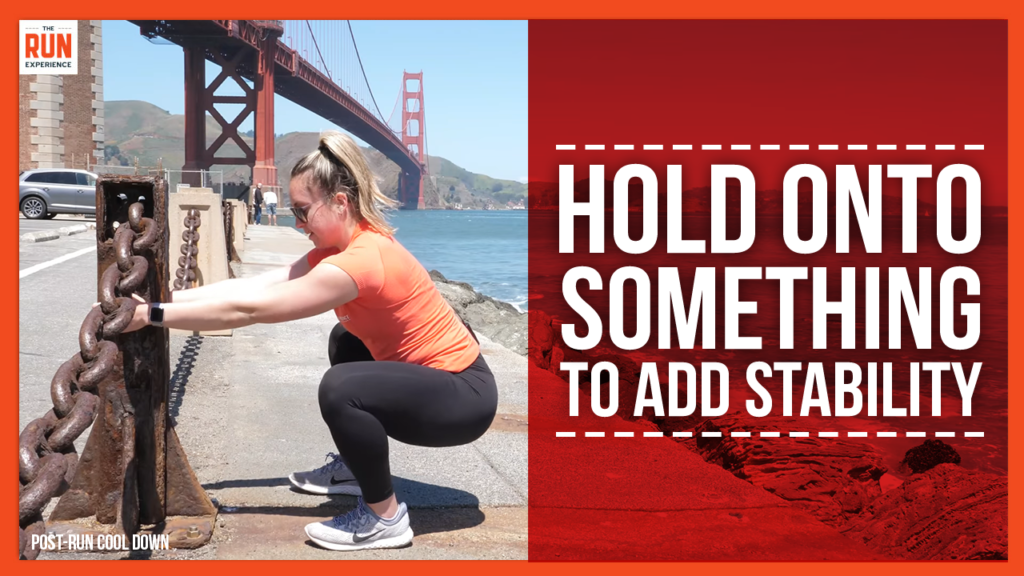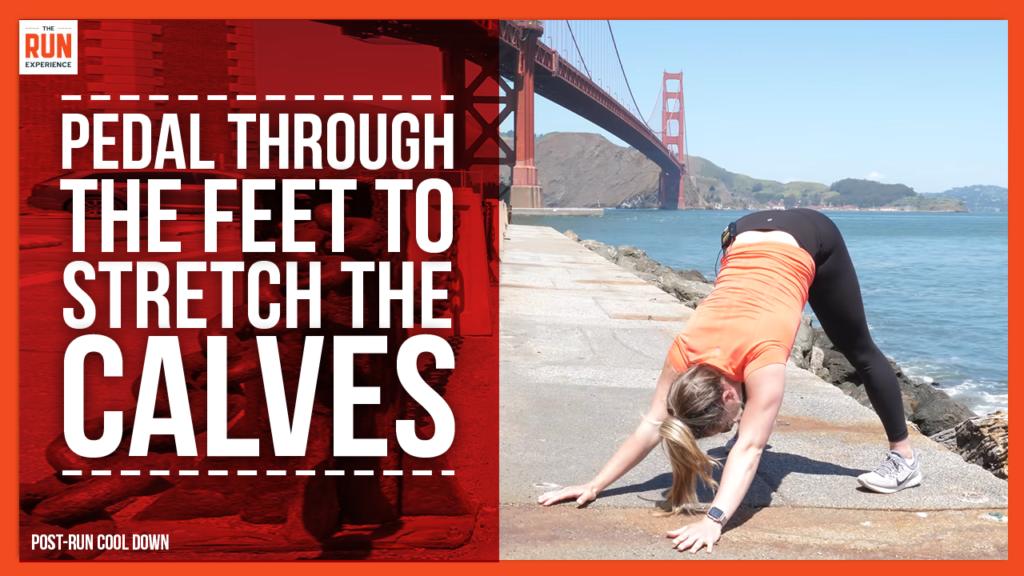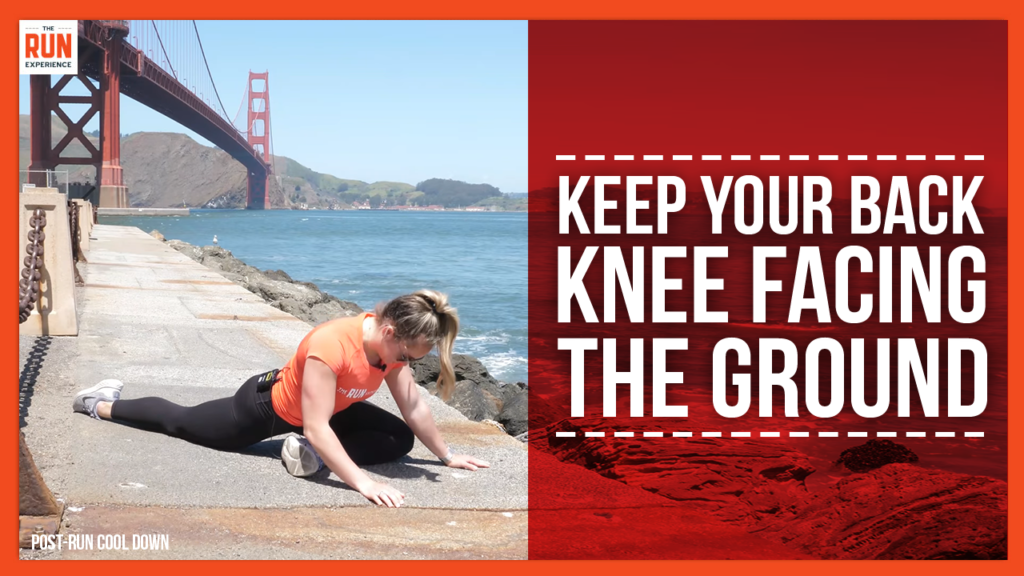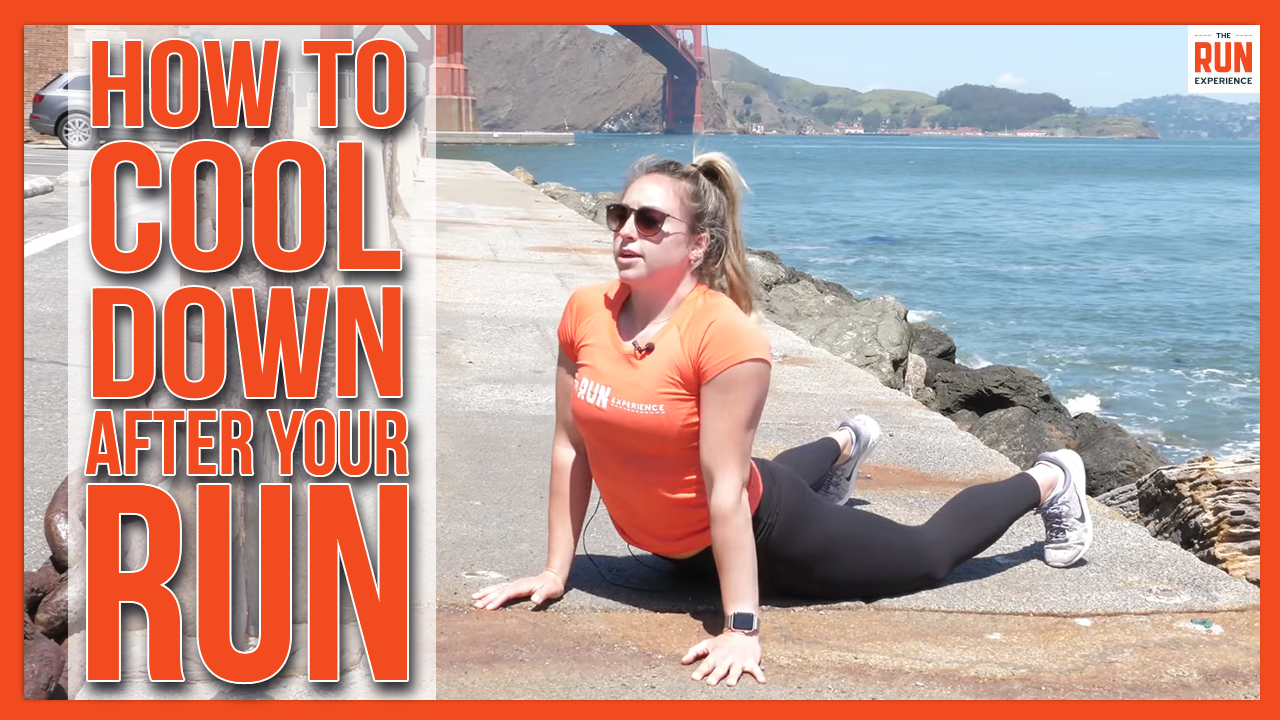Operating on sore legs is not any enjoyable, nevertheless it’s a part of the game. Nevertheless, there are steps you may take to cut back sore muscle groups from operating and get well sooner.
Let’s face it — we have all been there. You get up the morning after a killer exercise, and your legs really feel like they’re fabricated from lead. However here is the factor: operating on sore legs is as a lot part of our sport as tying our shoelaces. It is simply a type of quirks that makes us runners… nicely, runners.
However what if we instructed you there is a strategy to make these achy runs rather less “ugh” and a little bit extra “oh yeah”? At The Run Expertise, we’re all about serving to you develop into a stronger, extra resilient runner — sore legs and all.
On this article, we’re diving into the world of operating on sore legs. We’ll discover:
- When it is okay to push via: As a result of generally, these legs simply want a wake-up name.
- When to take a breather: As a result of relaxation days are secret weapons, not setbacks.
- Tricks to make sore runs extra bearable: We have got just a few tips up our sleeves.
- How one can scale back soreness within the first place: Prevention is value a pound of treatment — or on this case, a mile of simple operating.
So lace up these sneakers (even when your calves are protesting), and let’s dive in. Belief us — your future, less-sore self will thanks.
Ought to You Run on Sore Legs?
Deciding whether or not to run on sore legs is a typical dilemma for runners. Soreness could be a pure a part of the coaching course of, however understanding when it is secure to push via and when to relaxation is essential in your long-term well being and efficiency.
This is what you’ll want to know:
Understanding Muscle Soreness
- Forms of Soreness: There are typically two sorts of muscle soreness: acute soreness that happens throughout or instantly after a exercise (typically because of fatigue), and Delayed Onset Muscle Soreness (DOMS), which peaks a day or two after your run.
- DOMS: If you happen to’re experiencing DOMS, it is a signal that your muscle groups are recovering from a exercise that launched a brand new stage of depth or distance. This sort of soreness is regular and sometimes an indicator of muscle strengthening.
Operating with Sore Legs: The Pointers
- Delicate to Reasonable Soreness: In case your soreness is gentle to reasonable and would not considerably influence your operating type, it is typically secure to proceed operating. Nevertheless, it is sensible to cut back the depth and period of your run. Take into account a gradual, simple jog as a substitute of a high-intensity exercise.
- Extreme Soreness: If the soreness is extreme, particularly to the purpose the place it alters your operating type, it is best to relaxation. Operating with extreme soreness can result in compensation accidents as different elements of your physique attempt to take over, resulting in a cycle of ache and harm.
- Hearken to Your Physique: The secret’s to take heed to your physique. If you happen to’re feeling extra than simply typical muscle fatigue, resembling sharp ache or discomfort that feels out of the extraordinary, it is essential to relaxation and probably seek the advice of a medical skilled.
Alternate options to Operating on Sore Legs
- Lively Restoration: Take into account energetic restoration choices like strolling, biking, or swimming. These actions can enhance blood move to your muscle groups with out the excessive influence of operating, aiding in restoration.
- Stretching and Mobility Work: Participating in light stretching or mobility workout routines may help alleviate soreness and enhance flexibility.
- Hydration and Vitamin: Correct hydration and diet play a vital function in muscle restoration. Make sure you’re consuming sufficient water and consuming vitamins that support in muscle restore, like protein.
Suggestions for Operating When Sore
Experiencing some stage of muscle soreness as a runner is sort of inevitable, particularly after intense exercises or lengthy runs. Whereas it is vital to take heed to your physique and relaxation when essential, there are occasions when operating with gentle soreness could be manageable.
Listed below are some suggestions that can assist you run extra comfortably when coping with sore muscle groups:
1. Begin with a Light Heat-Up
Start with a gradual, light warm-up to progressively enhance blood move to your muscle groups. This may very well be a brisk stroll or a lightweight jog, adopted by dynamic stretches.
Incorporate dynamic stretches that mimic operating actions to arrange your muscle groups and joints, lowering the stiffness related to soreness.
2. Regulate Your Operating Tempo and Distance
If you happen to’re feeling sore, it is sensible to decrease the depth of your run. Go for a slower tempo and shorter distance to keep away from exacerbating muscle fatigue.
Take note of how your physique responds as you run. If soreness worsens, take into account reducing your run quick.
3. Deal with Correct Operating Kind
Maintain your posture upright and your strides managed. Poor type can irritate sore muscle groups and result in additional discomfort or harm.
Attempt to run as relaxed as potential. Pressure can exacerbate soreness, so deal with stress-free your shoulders, arms, and arms.
4. Keep Hydrated and Nourished
Correct hydration is vital to muscle perform and restoration. Make sure you’re well-hydrated earlier than, throughout, and after your run.
Consuming meals wealthy in protein and sophisticated carbohydrates can support in muscle restoration and give you the vitality wanted in your run.
5. Incorporate Restoration Strategies Submit-Run
Finish your run with a cool-down part, progressively lowering your tempo to a stroll. Have interaction in static stretching after your run to assist alleviate muscle tightness.
Utilizing a foam curler on tight muscle groups can support in releasing muscle knots and bettering blood move.
6. Embrace the 10-Minute Rule
While you’re sore and unmotivated, inform your self you may run for simply 10 minutes. This is the deal:
If after 10 minutes you are still feeling tough, give your self permission to name it a day. You have already executed one thing constructive in your physique.
However likelihood is, when you’re on the market, these endorphins will kick in and you may wish to hold going. It is like a little bit thoughts sport we play with ourselves — and it really works!
7. Strive the “fartlek sandwich”
No, it isn’t a bizarre Scandinavian lunch. It is a strategy to break up your sore-leg run:
- Begin with 5-10 minutes of simple jogging to heat up these creaky legs.
- Within the center, throw in 5-6 quick bursts of pace (about 20 seconds every) with simple jogging in between. This variation can truly provide help to really feel much less sore!
- End with one other 5-10 minutes of simple jogging to chill down. This strategy retains issues fascinating and may help you overlook concerning the soreness.
8. Convey within the “physique scan” method
This mindfulness observe is not only for yoga class. As you run, mentally scan your physique from head to toe. Discover areas of rigidity or soreness with out judgment.
Consciously attempt to calm down these areas as you run. This not solely distracts you from discomfort however can truly provide help to run extra effectively by releasing pointless rigidity.
Cooldown to Cut back Soreness from Operating
This text has a easy, five-minute calm down to revive your muscle groups after a exercise. If you happen to can’t spare 5 minutes, take the elements you want most and shorten it. When you have longer than 5 minutes, try these stretches you may add in. The extra you find time for, the higher you’ll really feel.
Professional tip: Be sure your trainers match proper and aren’t worn out. Go to your native operating retailer for recommendation on correct becoming sneakers that may assist stop soreness.
Squat Maintain
This train will assist hold your leg muscle groups, such because the hamstrings and quads from getting sore. To start, we’re going to sit down in our lowest squat place for one minute. Begin together with your ft a bit wider than hips’ width, toes pointing ahead.
From there, bend over and put your arms in your ft or shins and begin to squat down as little as you may go together with your heels on the bottom.
In contrast to you’ll do in a exercise, you’re going low sufficient right here that you could sit comfortably for one minute.

In case your ankles or calves are tight, it’s possible you’ll roll backward as you get to your lowest level. To repair this, go forward and seize onto one thing in entrance of you that you could lean away from.
Breathe and maintain in that place, with or with out entrance assist, for one minute.
Downward Canine Into Upward Canine

From there, discover a downward canine place. To do that, come on all fours going through the bottom after which press your hips up into the air.
Maintain your ft outdoors of hips’ width right here. Bend your knees if you’ll want to, with the tip aim being straight legs with heels touching the bottom. Press your chest again towards your quads, utilizing your arms to press down and and away.
Be at liberty to maneuver round on this place. Just like the squat, this shouldn’t be painful; it ought to really feel good in your physique.
After about 15 seconds there, decrease your abdomen to the bottom and press your chest off the bottom, discovering an upward canine place.
Attempt to hold your shoulders away out of your ears as you press up, which could imply you don’t come up as excessive. Maintain respiratory and really feel the stretch in your abs and decrease again.
After one other 15 seconds or so, transfer again into that downward canine and repeat this sequence two or 3 times. This train will assist hold your calf muscle groups from getting sore.
Pigeon Stretch
Subsequent, we’ll stretch out the glutes and hip flexors a bit. Sitting on the bottom, deliver one leg bent in entrance of you and the opposite leg prolonged behind you.
For much less stretch, deliver the heel of your entrance leg nearer into you, and switch your again knee outward.

For a tougher stretch, type extra of a 90-degree angle together with your entrance leg, and switch your again knee to face the bottom.
As with all of those stretches, be happy to maneuver round right here. And at all times hold respiratory.
Spend a full minute on one aspect earlier than switching legs. Don’t be alarmed if one aspect is tighter than the opposite aspect, that’s pure, particularly within the glutes.
Little one’s Pose
We saved the very best for final. To complete, all you’re going to do is maintain a one-minute youngster’s pose.
Begin by sitting in your knees, after which bend ahead together with your arms out in entrance of you on the bottom. Attempt to stretch your arms as distant from you as potential to get a great stretch in your lats.
Mess around with how far aside your knees are right here, and do what feels good for you. As well as, stroll your arms over to 1 aspect after which the opposite to deepen the stretch on the edges of your again.
Attempt to completely calm down on this place, simply letting your brow relaxation on the bottom, inhaling and exhaling.
Forestall Operating on Sore Muscle mass
That wasn’t so unhealthy, was it? This cool-down solely takes 5 minutes, and it will possibly make all of the distinction in your coaching tomorrow or the subsequent day.
We have journeyed via the ins and outs of operating on sore legs, and here is the underside line: a little bit soreness does not imply sport over. Actually, it typically means you are leveling up. These achy quads and tender calves? They are not simply ache — they’re your muscle groups adapting, getting stronger, turning into extra resilient.
However keep in mind, we’re not advocating for operating via severe ache or harm. That is a one-way ticket to Setbackville (actual place), and belief us — you do not wish to go to there. The secret’s studying to tell apart between “good” soreness (the sort that comes from pushing your limits) and “unhealthy” ache (the sort that screams, “Hey, one thing’s not proper right here!”).
So, what is the takeaway? Listed below are our last ideas:
- Hearken to your physique — It is smarter than you suppose and normally is aware of what it wants.
- Embrace restoration — These simple days and relaxation days aren’t slacking — they’re when the magic occurs.
- Keep constant — A little bit little bit of one thing is at all times higher than a complete lot of nothing.
- Maintain it enjoyable — As a result of on the finish of the day, that is why we’re all out right here, proper?
Keep in mind, each runner — from the weekend warrior to the elite marathoner — offers with sore legs. It is a part of the journey. However with the best strategy, you may flip these achy days into stepping stones towards your objectives.
Are you seeking to leverage your efficiency in your subsequent marathon? Then try our tremendous well-liked 8 weeks half marathon coaching program. That is specifically designed to not solely provide help to put together for the marathon but additionally information you on avoiding operating accidents and giving your greatest shot.

This article provides a solid overview of handling soreness while running. It’s important to listen to your body, and I appreciate the tips on active recovery.
I found the section on distinguishing between good soreness and bad pain particularly helpful. Understanding this can make a big difference in training.
The suggestion to incorporate dynamic stretches before running is a great reminder. I’ve noticed it helps with my overall performance.
I like the idea of using the ’10-minute rule’ to get started when feeling sore. It’s a smart psychological trick that might help many runners.
‘Fartlek sandwich’ is an interesting term! I’m curious to try that method during my next run to see how it affects my soreness.